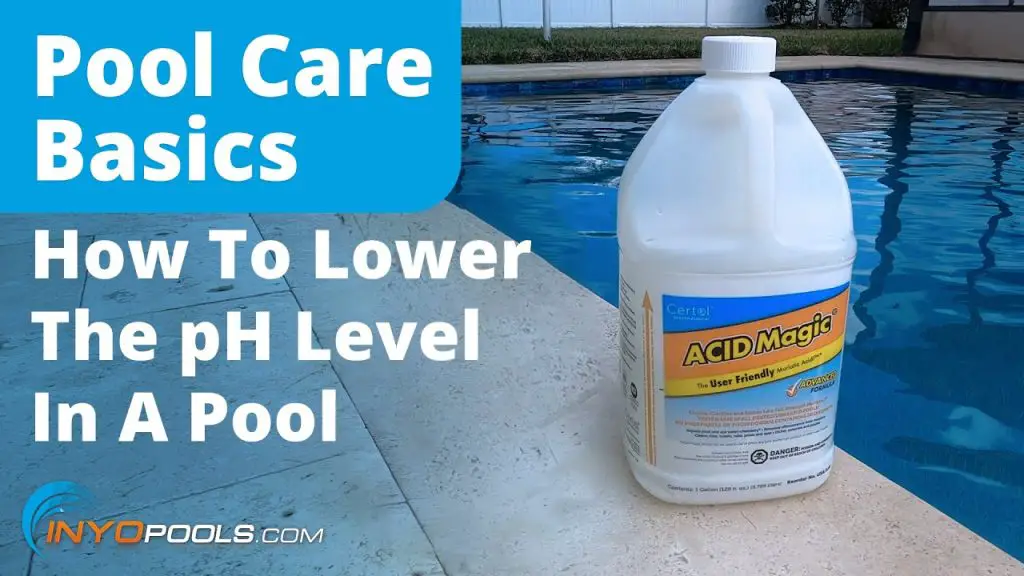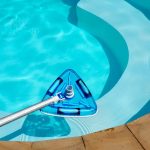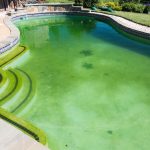Having a well-maintained pool is essential for ensuring a safe and enjoyable swimming experience. One of the key aspects of pool maintenance is keeping the pH and alkalinity levels within the recommended range. High pH and alkalinity levels can lead to various issues such as cloudy water, scale formation, and ineffective chlorine disinfection. In this article, we will explore effective ways to lower pH and alkalinity in a pool, ensuring that your pool remains clean, clear, and inviting for swimmers.

Credit: waterguru.com
Understanding pH and Alkalinity
Before diving into the methods of lowering pH and alkalinity, it’s important to understand what these terms mean. pH measures the acidity or basicity of the water on a scale of 0 to 14, with 7 being neutral. A pH below 7 indicates acidic water, while a pH above 7 indicates basic (or alkaline) water. The ideal pH range for a pool is between 7.2 and 7.8, with 7.4 to 7.6 being the optimal range.
Alkalinity, on the other hand, refers to the water’s ability to resist changes in pH. It acts as a buffer, helping to stabilize the pH level. The recommended alkalinity level for a pool is between 80 and 120 parts per million (ppm).
Testing the Water
Before attempting to lower the pH and alkalinity levels in your pool, it’s crucial to test the water using a reliable test kit. These kits are readily available at pool supply stores and are essential for accurately measuring pH and alkalinity levels. Once you have obtained the test results, you can proceed with the appropriate adjustments.
Ways to Lower pH and Alkalinity
1. Add Muriatic Acid
Muriatic acid, also known as hydrochloric acid, is a common and effective way to lower both pH and alkalinity in a pool. It is essential to follow the manufacturer’s instructions and safety precautions when handling muriatic acid. Using a chemical-resistant pump sprayer, slowly add the acid to the deep end of the pool while the pump is running. Allow the water to circulate for several hours before retesting the pH and alkalinity levels.
2. Use Sodium Bisulfate
Sodium bisulfate, also referred to as dry acid, is another option for lowering pH and alkalinity in a pool. This granular substance can be added directly to the pool water, and it is important to follow the recommended dosage based on the test results. Allow the pool water to circulate for a few hours before retesting the pH and alkalinity levels.
3. Increase Aeration
Increasing the aeration of the pool water can also help to lower pH and alkalinity levels. This can be achieved by running the pool’s jets, waterfall, or fountain to agitate the water and introduce more air. The additional aeration will promote the release of carbon dioxide, which can lower the pH over time.
4. Use A Ph Reducer
Commercial pH reducers are available at pool supply stores and can be an effective solution for lowering pH levels. These products typically contain sodium bisulfate or other acidic compounds designed to gradually reduce the pH of the pool water. Follow the manufacturer’s instructions for the proper application and dosage.
5. Replace Some Pool Water
If the pH and alkalinity levels are excessively high, partially draining and refilling the pool with fresh water can help dilute the alkalinity and lower the pH. This method should be used as a last resort and is best suited for situations where other methods have been ineffective in achieving the desired results.
Preventing pH and Alkalinity Imbalance
Once you have successfully lowered the pH and alkalinity levels in your pool, it’s important to take preventive measures to avoid future imbalances. Regularly test the water and maintain proper filtration and circulation to ensure that the chemical levels remain within the recommended ranges. Additionally, monitoring the pool’s total dissolved solids (TDS) and conducting regular water exchanges can help prevent the buildup of alkalinity and stabilize the pH levels.

Credit: www.youtube.com
Conclusion
Keeping the pH and alkalinity levels in a pool within the optimal range is crucial for maintaining water clarity, preventing scale formation, and ensuring effective disinfection. By utilizing the methods outlined in this article, pool owners can effectively lower pH and alkalinity levels, creating a safe and enjoyable swimming environment for all. Remember to always follow the manufacturer’s instructions and safety precautions when handling pool chemicals, and regularly test and monitor the water to maintain a healthy and well-balanced pool.





